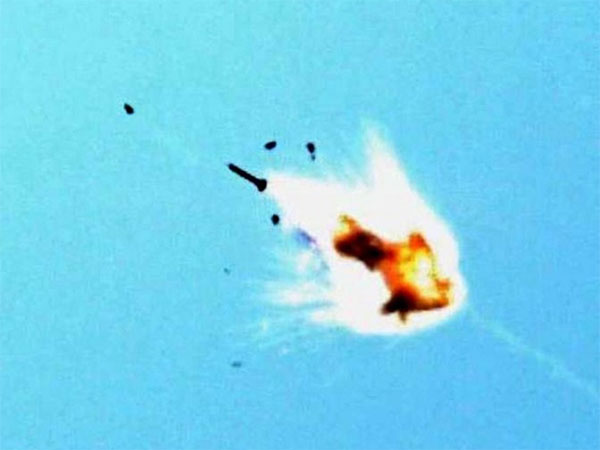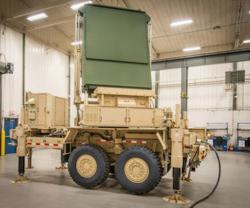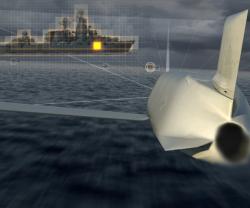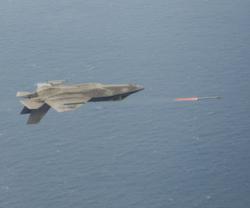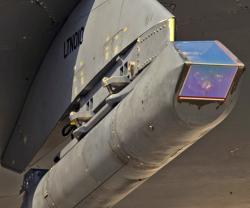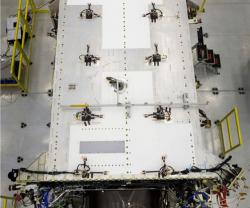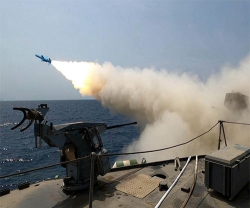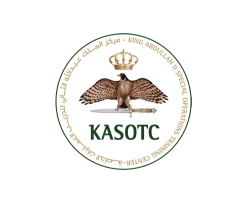Lockheed Tests ADAM System Against Qassam-Like Targets
13.05.2013 Products
Lockheed Martin announced that it has successfully demonstrated the Area Defense Anti-Munitions (ADAM) system in multiple tests against free-flying Qassam-like rocket targets.
The prototype laser system has destroyed 8 small-caliber rocket targets in flight at a range of approximately 1.5 kilometers (0.9 miles) in tests conducted in March and April 2013.
Lockheed Martin is developing the transportable, ground-based ADAM laser system to provide a defense against short-range threats, including improvised rockets such as Qassam rockets, unmanned aerial systems and small boats.
The tests represent increasingly complex scenarios against representative airborne targets. In 2012, the system successfully destroyed 11 small-caliber rocket targets in simulated flight tethered to a cable at a range of approximately 2 kilometers (1.2 miles). The system also successfully engaged an unmanned aerial system target in flight at a range of approximately 1.5 kilometers (0.9 miles) in 2012.
“Our test results demonstrate the capabilities of the ADAM system to provide a practical, affordable directed-energy solution to the real-world problem of close-in threats,” said Tory Bruno, President of Strategic and Missile Defense Systems, Lockheed Martin Space Systems Company.
Designed for short-range defense of high-value assets including forward operating bases, the ADAM system’s 10-kilowatt fiber laser is engineered to destroy targets up to 2 kilometers (1.2 miles) away. The system precisely tracks targets in cluttered optical environments and has a tracking range of more than 5 kilometers (3.1 miles).
The system is being designed to be flexible enough to operate against rockets as a standalone system and to engage unmanned aerial systems with an external cue.
Lockheed Martin based the design on commercial hardware components paired with its laser beam control architecture and software to provide the performance needed for these types of threats without the cost and time required for full custom development. The system is integrated in a container that is mounted on a trailer, making it readily transportable.
“High-energy lasers complement kinetic energy systems and have unique attributes, including very low cost per engagement, a virtually unlimited ‘magazine’ and minimal collateral damage,” said Doug Graham, Lockheed Martin’s Vice President of Advanced Programs for Strategic and Missile Defense Systems.
Lockheed Martin has been a pioneer in the development and demonstration of high-energy laser capabilities for more than 30 years and has made key advances in areas such as precision pointing and control, line-of-sight stabilization and adaptive optics.
The prototype laser system has destroyed 8 small-caliber rocket targets in flight at a range of approximately 1.5 kilometers (0.9 miles) in tests conducted in March and April 2013.
Lockheed Martin is developing the transportable, ground-based ADAM laser system to provide a defense against short-range threats, including improvised rockets such as Qassam rockets, unmanned aerial systems and small boats.
The tests represent increasingly complex scenarios against representative airborne targets. In 2012, the system successfully destroyed 11 small-caliber rocket targets in simulated flight tethered to a cable at a range of approximately 2 kilometers (1.2 miles). The system also successfully engaged an unmanned aerial system target in flight at a range of approximately 1.5 kilometers (0.9 miles) in 2012.
“Our test results demonstrate the capabilities of the ADAM system to provide a practical, affordable directed-energy solution to the real-world problem of close-in threats,” said Tory Bruno, President of Strategic and Missile Defense Systems, Lockheed Martin Space Systems Company.
Designed for short-range defense of high-value assets including forward operating bases, the ADAM system’s 10-kilowatt fiber laser is engineered to destroy targets up to 2 kilometers (1.2 miles) away. The system precisely tracks targets in cluttered optical environments and has a tracking range of more than 5 kilometers (3.1 miles).
The system is being designed to be flexible enough to operate against rockets as a standalone system and to engage unmanned aerial systems with an external cue.
Lockheed Martin based the design on commercial hardware components paired with its laser beam control architecture and software to provide the performance needed for these types of threats without the cost and time required for full custom development. The system is integrated in a container that is mounted on a trailer, making it readily transportable.
“High-energy lasers complement kinetic energy systems and have unique attributes, including very low cost per engagement, a virtually unlimited ‘magazine’ and minimal collateral damage,” said Doug Graham, Lockheed Martin’s Vice President of Advanced Programs for Strategic and Missile Defense Systems.
Lockheed Martin has been a pioneer in the development and demonstration of high-energy laser capabilities for more than 30 years and has made key advances in areas such as precision pointing and control, line-of-sight stabilization and adaptive optics.
Latest news
Latest events
DSEI 2025
09 - 12 Sep 2025Excel, London - United KingdomIntersec Saudi Arabia
29 Sep - 01 Oct 2025Riyadh International Exhibition & Convention Centre - Saudi ArabiaDubai International Air Chiefs’ Conference (DIACC 2025)
16 Nov 2025Atlantis, The Palm Dubai - United Arab EmiratesDubai Airshow
17 - 21 Nov 2025Dubai World Central (DWC) - United Arab Emirates

